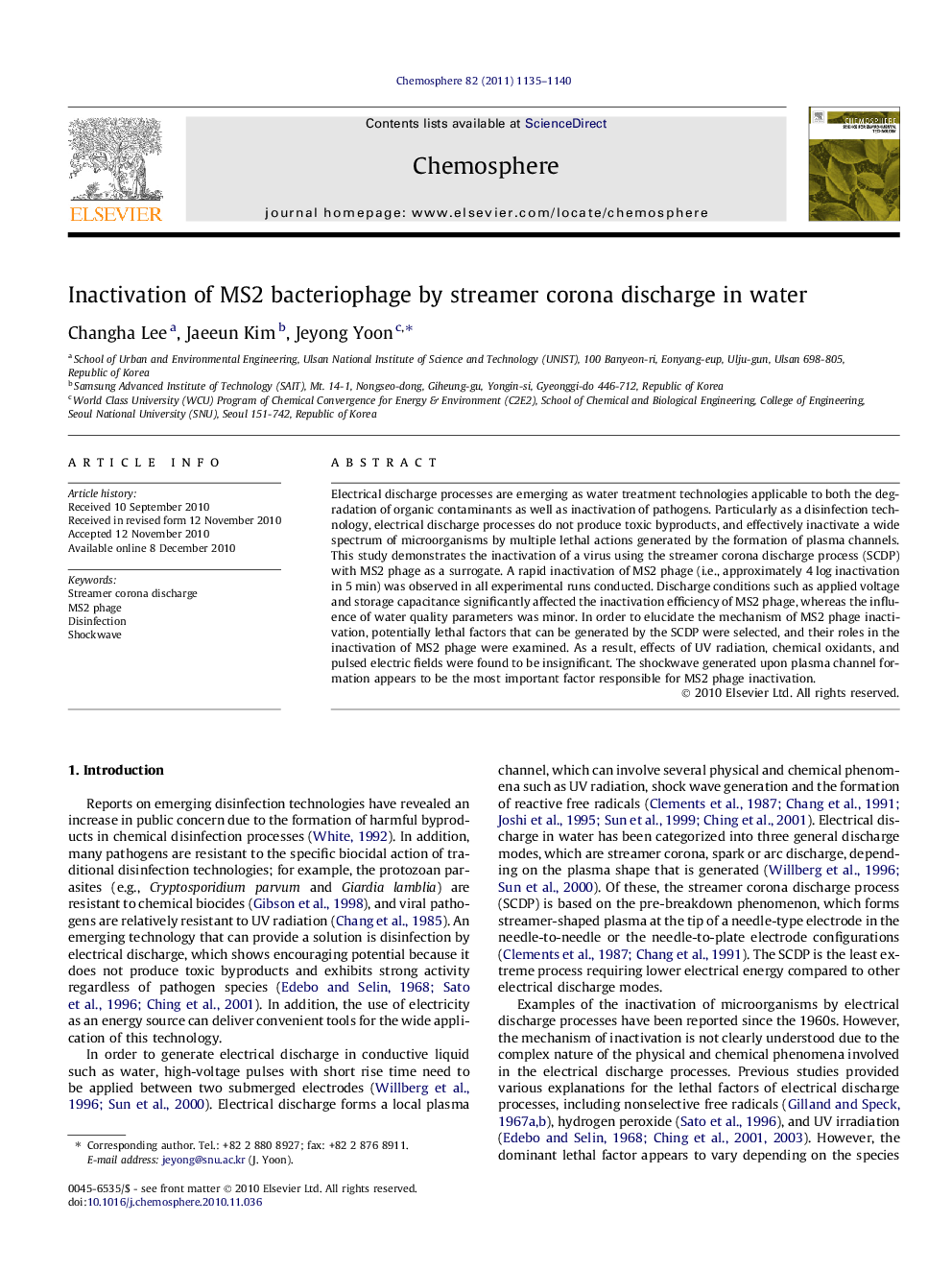| Article ID | Journal | Published Year | Pages | File Type |
|---|---|---|---|---|
| 4411401 | Chemosphere | 2011 | 6 Pages |
Electrical discharge processes are emerging as water treatment technologies applicable to both the degradation of organic contaminants as well as inactivation of pathogens. Particularly as a disinfection technology, electrical discharge processes do not produce toxic byproducts, and effectively inactivate a wide spectrum of microorganisms by multiple lethal actions generated by the formation of plasma channels. This study demonstrates the inactivation of a virus using the streamer corona discharge process (SCDP) with MS2 phage as a surrogate. A rapid inactivation of MS2 phage (i.e., approximately 4 log inactivation in 5 min) was observed in all experimental runs conducted. Discharge conditions such as applied voltage and storage capacitance significantly affected the inactivation efficiency of MS2 phage, whereas the influence of water quality parameters was minor. In order to elucidate the mechanism of MS2 phage inactivation, potentially lethal factors that can be generated by the SCDP were selected, and their roles in the inactivation of MS2 phage were examined. As a result, effects of UV radiation, chemical oxidants, and pulsed electric fields were found to be insignificant. The shockwave generated upon plasma channel formation appears to be the most important factor responsible for MS2 phage inactivation.
Research highlights► We investigate the inactivation of MS2 phage using the streamer corona discharge process with MS2 phage as a surrogate. ► We examine the effects of applied voltage, storage capacitance, and water quality parameters on the inactivation of MS2 phage. ► The shockwave generated by the electrical discharge appears to be an important factor responsible for MS2 phage inactivation.
